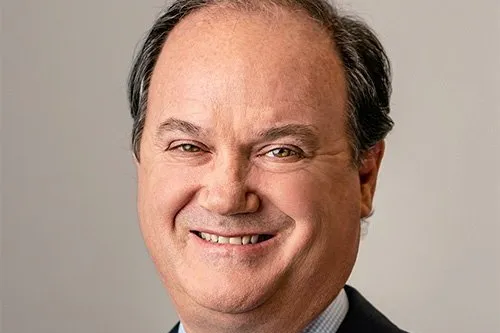US utility CEO says 'we can work through Trump challenges'
Nation's second largest clean energy operator Xcel Energy has submitted proposals for multiple gigawatts of battery storage, solar, wind, and hybrid through 2031, which are under review by state utility regulators, CEO Bob Franzel told investors

Xcel Energy, the number two US renewables electric utility, is not overly concerned that President Donald Trump’s executive orders will impede its ability to carry out planned wind and solar investments, according to CEO Bob Frenzel.
“We think that any of the executive orders and any of the challenges that may be embedded in there today are things that we can always work through,” he said on a recent earnings call. “We’ll be able to work with the administration and all the agencies to make progress here."
Trump on 20 January, his first day in office, signed various executive orders pertaining to energy, many of them directed at oil and natural gas.
Among them, however, was one that banned offshore wind leasing and permitting on the federal outer continental shelf, where most sector activity occurs. He also requested a full review of existing leases and identification of “any legal bases” to either terminate or amend them.
Trump also ordered temporary cessation and assessment of federal leasing, financing, and permitting practices for clean energy-related projects on US-owned lands in the country’s interior. About 30GW of development projects, mainly solar, would require environmental approvals.
Frenzel reminded stock analysts that Xcel’s power generation pipeline does not include offshore wind, and it has no renewable energy projects on federal lands.
“Our permitting needs are actually relatively light for wind and solar and storage assets,” he said, expressing optimism that Xcel’s $11bn 2025 capital plan and a further $34bn beyond through 2029 will remain intact.
It expects to spend $3.36bn this year on renewables across an eight-state service territory that includes parts of wind energy leaders Colorado, Minnesota, New Mexico, and Texas.
At the start of 2024, Xcel’s utilities had a combined 15GW of renewable energy – mainly wind - on their systems, second only to Warren Buffett’s Berkshire Hathaway Energy with more than 16GW.
Xcel has issued resource requests for proposals for potential multiple gigawatts of battery storage, solar, wind, and hybrid through 2031, which are under review by state utility regulators.
“We have about 30% expected load growth over the next five years, and making sure we can deliver on that is important,” said Frenzel.
He said Xcel supports a broad and all-of-the-above US energy strategy that enables consumers to access low-cost power. This includes renewables, nuclear, and incremental natural gas resources, new peaking but not new baseload. It also is converting several plants from coal to gas.
Residential electric bills in its service territories are 28% below the national average in no small part due to $5bn in customer savings from wind avoiding fuel costs, and federal production tax credit benefits, according to Frenzel.
It’s no different for corporate customers, who see wind and solar as important to Xcel’s ability to deliver low-cost energy. They are “very important” for its hyper-scaler and data centre customers who remain committed to meeting sustainability goals, he added.
Xcel supports Trump’s proposed federal permitting reform that would facilitate construction of electrical infrastructure necessary for utilities to deliver more system capacity.
Turning to tariffs, which Trump has embraced as a primary tool to pressure both allied and hostile nations for trade and other concessions, Xcel was not caught off-guard, according to CFO Brian Van Abel.
He noted Xcel has dealt with tariffs imposed by Trump in his first term that were largely left in place by successor Joe Biden. It has gotten familiar working with wind and solar equipment suppliers outside China to ensure the right procurement decisions are made to “deliver the best possible price to our customers.”
Trump’s move to slap an additional 10% tariff on Chinese goods was well communicated and not surprising, he said.
“As you would expect, given our forward-looking nature and all the renewable stuff having in flight, that we had planned for something like that and have taken the appropriate actions,” said Van Abel.
(Copyright)